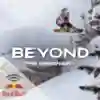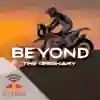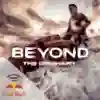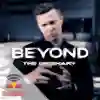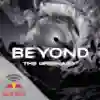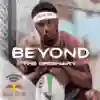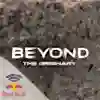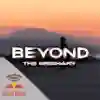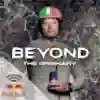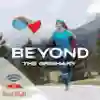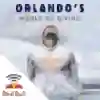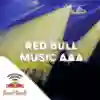|NICK BRIGHT| Welcome to Beyond the Ordinary from Red Bull. I'm Nick Bright and today we're dialing down the temperature and turning up the adrenaline, because this episode is all about snowboarding. The Natural Selection Tour looks set to break the mould.
|TRAVIS RICE| It is full spectrum snowboarding.
|NICK BRIGHT| Testing the best riders on the planet as never before, combining freestyle tricks with the big mountain terrain, but it's a competition with a very important wider message at its heart.
|TRAVIS RICE| I think we have a bit of a responsibility as the stewards of this planet to make better decisions than our forefathers did.
|NICK BRIGHT| We'll meet the snowboarding legend, who's the driving force behind one of the most innovative and exciting events in sport and find out how the Natural Selection Tour is pushing boundaries and setting a new precedent for education and sustainability in the world of winter sports.
|NICK BRIGHT| And don't forget you can subscribe to Beyond the Ordinary for free wherever you get your podcasts. Before we get chatting to our main guest today, the one and only Travis Rice, that is, I want to bring in my co-host for this episode because I am delighted to be joined by former pro snowboarder and X Games champion Tina Dixon. Tina, welcome to Beyond the Ordinary.
|TINA DIXON| Thank you. Thank you. It's good to be here.
|NICK BRIGHT| I'm sure a familiar name and voice to anyone who follows snow sports. Tina, you competed in big air, right?
|TINA DIXON| I did.
|NICK BRIGHT| Just familiarise the listeners in case they don't know, you know, just your story then.
|TINA DIXON| So I grew up in Utah and there were no parks at the time, so we had to build our own jumps and I became very familiar with hitting bigger jumps or jumps in general. And then big air contest started coming along and I was like, "Well, I know how to hit those." So I started entering big air contests and won some X Games gold medals doing that. That's where I was most comfortable competing, were the big air competitions.
|NICK BRIGHT| Right. And big air, you have to be made of stern stuff to get involved with it, I think.
|TINA DIXON| Oh, yeah, absolutely. Yeah, yeah. I look at the jumps now and I'm like, "No, thanks."
|NICK BRIGHT| But we're going to be talking to Travis Rice in a moment and for those who don't know, he's a living legend in snowboarding, isn't he?
|TINA DIXON| Oh, yeah. I mean he's-- he's so much more beyond just someone that rides a snowboard. You know he is really over the last, you know, 10-20 years become sort of a modern-day explorer. He's put out a lot of great movies and, you know, within those movies there's a fantastic storytelling element of his travels and exploring different locations around the globe. He has definitely contributed and his purpose is-- is beyond just riding a mountain and you can start to see that with the event that he's doing.
|NICK BRIGHT| So, Tina, just give us a brief explanation of some of the terms that you think we might hear today because he's a backcountry snowboarder but, you know, I'm expecting to hear things like off-piste, freeriding, big air, half pipe, slopestyle. So just break down what some of those mean for us, if you could.
|TINA DIXON| Yeah. So there's resort riding. When you basically go to a ski resort, you take a lift up, you go down the slopes. They might have a park with jumps. They might have a half pipe that you can ride. So that's resort riding. Now, anything outside of the resort, it would typically be considered backcountry riding and a lot of times those riders will go and film video parts when you're in the backcountry and, you know, there's a whole big safety element that you need to go out there and you need to know what you're doing when you are riding in that type of terrain to be safe. But those videos have been such a big part of snowboarding from the very beginning and now this event is combining that backcountry riding with the competitive side of snowboarding.
|NICK BRIGHT| Mm. 2021 sees the debut of the full tour and this is a big deal for the sport, isn't it, Tina?
|TINA DIXON| Yeah. And it's-- I think it's something that the sport needs at this moment. We see a lot of just, you know, the slopestyle contest and the half pipe contest like I mentioned earlier, but when you take natural snowboarding, when you go to a mountain there's, you know, the slopes, but there's always these different aspects that you're looking for to ride and to make it a little bit different or challenging and, you know, that's sort of the natural element. You're finding different rocks or jumps to hit that are within that natural terrain and this event is taking that type of riding and making a contest of it. Yes, and the jumps are bigger. The-- the drops are bigger. The-- the terrain is bigger and it's really taking those riders that specialise in backcountry riding and giving them a platform to compete on and showcase their skill set.
|NICK BRIGHT| Well, we're going to get Travis on shortly, but just briefly some of the big names that we're going to see competing, you know, who are you excited to see?
|TINA DIXON| You know, Mark McMorris is competing. He-- he's a big, big slopestyle rider. He's been competing in a ton of events, but I'm really excited to see him and how he attacks the backcountry. Also, Ben Ferguson and then on the women's side um, you know, Jamie Anderson and then you've got Anna Gasser and then, you know, every rider on this list is talented in their own right and they're going to interpret this course their own way and that's also another element that makes this event so exciting.
|NICK BRIGHT| Okay. I think it's high time we introduced our listeners to one of snowboarding's living legends. That's right. I said it. Travis Rice, welcome to Beyond the Ordinary. How you doing, mate?
|TRAVIS RICE| Yeah. I'm doing good, man. I appreciate the-- the old LL status. I'm going to be frank. I feel like I'm still too young for the L word, but I'll take it. It's a pleasure to be on with you today.
|NICK BRIGHT| Yeah. It's-- it's a pleasure to have you my friend. But, Travis and Tina, you-- you guys actually know each other already, right?
|TRAVIS RICE| Oh, yeah.
|TINA DIXON| Yeah. It is one of those relationships where I watched Travis snowboard. Travis travels the world and makes really cool movies and-- and does amazing lines and then I watch it and nerd out and want to go snowboarding and get really bad FOMO. So Travis has, obviously, been doing something very right over the last decade plus two decades.
|TRAVIS RICE| Thank you.
|TINA DIXON| But I'm super, super stoked that this tour is starting and the event is coming back.
|NICK BRIGHT| Travis, as we heard Tina described you earlier as a ground-breaking snowboarder, but you're also a filmmaker, an event entrepreneur. So when people ask you what you do, how do you describe yourself?
|TRAVIS RICE| Well, funny enough, I think ground-breaking is a term I would, use but maybe in a little bit different of a context. You see I'm-- I'm slightly barrel chested and bigger than most and, you know, I'm a good snowboarder, but I am really good at eating shit and getting back up. I leave holes in-- in the ground when I fall. And, you know, that's part of-- that's part of progression, you know, learning through mistakes and learning through the hard way. You got to-- you got to fall before you figure it out. And I think more than anything, I've just really enjoyed, you know, all things snowboard for the last, you know, 25-30 years, you know, I've been lucky enough to play in all the many different facets of snowboarding, which is probably why I am still very much interested in it is, you know – snowboarding is something that is not really contained in a box. There's so many different, you know, if you want to call them disciplines or ways to express yourself on a snowboard. And so, you know, here we are today talking about yet another one.
|NICK BRIGHT| Mm. Well, just on that then, you know, you must be extremely busy at the moment getting everything ready for the launch of your Natural Selection Tour. And this is something that's close to your heart in more ways than one, isn't it? So can you tell us what it's all about?
|TRAVIS RICE| I think the Natural Selection is a direction that snowboarding has been headed in for, you know, hell, 50 years. I've been lucky to be a part of it for, you know, a couple decades. But, you know, when you look at the progression with the equipment what, you know, different riders were utilising the snowboard to, you know, express themselves, I think that this event and this tour that we've been developing, really since, I mean 2008 was when we did the first one here in Jackson Hole, I think it's, you know, kind of finally bringing freestyle riding back to the mountains. And, you know, for the last 20-30 years you've seen this incredible progression in the freestyle components. Right? From where riders are going and, you know, what they're doing with the half pipe and slopestyle, you know, big air. And so, that's kind of been the face of the competitive side. You know all of the independent events that were happening 20 years ago, 10 years ago, you know, kind of inception with the Olympics. And, you know, it's gotten to such an incredible place. I mean it's truly fascinating what the human, you know, body is capable of when driven with, you know, passion and an open palette for how someone wants to interpret the terrain and put their own spin on the style of a trick. And alongside of that, you know, another part of the cultural components of snowboarding and kind of alpine winter sports, you know, skiing, you know, as well is the film and backcountry riding. And how do you, you know, capture and showcase backcountry riding? Through-- through the film. And I mean, you look back to Warren Miller and how prevalent his films were, which then, you know, that kind of evolved into many of the snowboarding and ski films that so many people digest on the yearly. And so, there's kind of been these-- these two paths, right? And I think ultimately with the democratisation that the internet and social media has brought and this, you know, hyper-specific skill set that's now needed to compete in half pipe and slopestyle. The atmosphere is right for this new kind of avenue, this new path, which is blending, you know, the best in the world on natural terrain where it's a combination of what people are doing in the backcountry and the skills that riders have attained over an entire lifetime, over a career, and are able to apply them to what I think is probably the most technical and challenging, you know, let's call it a discipline which is, you know, freestyle freeriding.
|TINA DIXON| Yeah. There's the competitive side of snowboarding. There's also the filming aspect of snowboarding and this is sort of a blending of the two and you're giving competitive snowboarders a platform on natural terrain and seeing how they interpret it. And, Travis, I have to ask you, why-- why now-- why do you feel like it was right to do it now? Because for-- I look at the big picture and I'm like, wow, he couldn't have timed this any better because snowboarding needs an event like this.
|TRAVIS RICE| I think why now. There's several answers to that and, you know, one of them to be completely honest is technology. You know, some of the kind of technological hurdles that we've been able to clear with this event are, you know, how do you run an event like this live from remote locations and backcountry. Just the size of the venue, let's say, here in Jackson. Like, the square acreage. You know, it's almost eight to 10 times that of, like, an X Game slopestyle run, right? And to be able to cover that and also bring an immersive experience for the viewer, you know, that's been a big kind of hurdle. And with what we've been developing for this, like, follow drone technology that almost gives you this third-person shooter video game angle. You know it really kind of gives for the first time for this type of riding viewers a sense of what it's like to ride through, you know, natural terrain, natural topography, and how tricky natural conditions make doing tricks, etc. So I think technology has definitely been a hurdle. I think another component of it is now that it's so specific to be at the top, riding half pipe, riding slopestyle, it's gotten really specific and there's really a, you know, generally speaking, a pretty small age demographic that you can be at the top of your game. I think it's challenging. You have, you know, X Games athletes like Sage Kotsenburg who, you know, won Olympic gold and he's just starting to get into the prime of his abilities and his career applying what he's learned into backcountry conditions. And so, I think this is right for the time with this kind of being the highest echelon of competitive riding. And this is built to be something that complements all aspects of riding. I mean literally from, you know, from street to transition riding a half pipe like those skills mixed with, you know, how you pick a line, how do you ride natural terrain with, with powder. All of those skills play in a little differently for every different, you know, rider in this tour.
|NICK BRIGHT| Travis, you mentioned your home mountain quite a few times, Jackson Hole in Wyoming, but there's a few locations on this tour, isn't there? So just break down a few of those locations for us.
|TRAVIS RICE| Yeah, sure thing. So in 2008 we did the Natural Selection, which was the original, here in Jackson Hole. It was pretty progressive. All the riders that came were currently riders that, you know, were still competing in most competitions, and so this was the first, like, natural terrain event that we kind of all collectively got to compete on. Everyone left so kind of thrilled and overjoyed about it, it was-- it was something that we took as a, "Okay. This is-- this is good. We need to figure out how to continue to do this." And so, then it took me about five years to find and solidify the next location we were going to do it, which we, you know, basically ended up going to Baldface outside of Nelson, British Columbia, working with my team there to kind of modify one of the best runs. And we ran two years of that event with Red Bull's support and it was the Red Bull Super Natural and the next year we changed the name to Ultra Natural. And, at that point, we stepped back because the intention was always to try to, you know, pull together a tour, multiple destinations, multiple stops and one of the primary reasons for that is again to highlight the different types of snow, topography, geology, even hydrology and how those different variables change the approach for, you know, riders riding this type of terrain. And so, this year as we launch kind of the first year of this tour, we're kicking it off here in Jackson Hole and, you know, we're here in the Rocky Mountains and we have a drier snowpack with, you know, oftentimes rocks are kind of still prevalent, which makes it really interesting because our whole purpose of these venues we're creating is to provide, you know, a canvas that has as many opportunities for riders to express themselves creatively, right? And so, here in the Jackson event we're launching, and the next stop is up in Canada, up in the Baldface region. And the interior of British Columbia has its own unique properties of, you know – the terrain and what type of trees are at high elevation. It gets a much wetter snowpack. And then, you know, for the culmination we thought it's only appropriate to take it up to Alaska. And so, our kind of super final stop this year will be in the Alaska Range, up north of Anchorage and that'll be kind of into March.
|NICK BRIGHT| So can you set the scene for us, Travis? You know, how does it work? I've-- I've heard the phrase backcountry quite a lot so just explain to us what we're talking about here? How big are the runs?
|TRAVIS RICE| The runs are about a thousand foot vertical. And so, when you say a thousand foot vertical, you know, and the average pitch of the run is, you know, 30-40 degrees, you're talking a couple of thousand feet long. Riders that are riding, like I'll use the Jackson example, you know, their runs are probably going to be around a minute long and, you know, within that run there's probably got to be, you know, 40 large features, about 100 smaller features. And a big component of our work on these venues is to kind of enhance the character that already exists there, you know. And so we're going up and we're making it safer – stumps, dead trees, sharp rocks. We're just enhancing the rideability of the venue. We've literally made the best, most sexy, most rideable, most inviting runs on the planet and, frankly, you know, the riders are – let's use the word ‘frothing’. They're-- they're psyched. Like, they're so excited to have a go at, you know, putting together runs on this type of venue with whatever snow conditions we're going to have.
|TINA DIXON| Yeah. And that's also something I think that's really cool about this event is a lot of contests you have a specific day to compete on. So, say the event is scheduled for the 7th, it's going to run on the 7th most likely, unless some really crazy bad weather comes in, but the majority of the time it runs on that specific date. But this event, there's a window. I love that you're doing that. There's a seven-day window. You only need two days to actually have the competition. And those two days, you're going to wait for the best weather. I love that that's happening because they do that in surfing and now you're finally doing it in snowboarding.
|TRAVIS RICE| Yeah. It's only appropriate. I mean you got the best in the world coming out for this. We're trying our hardest to-- yeah, have riders ride in the best conditions, period.
|TINA DIXON| Something to note also on this event is riders don't get practice. So other slopestyle events they get as many practice runs as they want within, you know, a two- or three-hour practice window, period. But this event, these riders are going to come up. They will not have any practice, because you want to keep the course in good condition. So kind of talk a little bit more about that, explain that to us, and how they will actually be able to pick out a line.
|TRAVIS RICE| Yeah, you know, it's a funny component, right? The no-practice component. You know, there's compromises that have to be made with this type of event. And, at the end of the day, you know, we're kind of just calling on the, hey, you know, you guys have been doing this for 5, 10, 20 years, let's go, get paid to snowboard. We know you guys are the best in the world at on-siting runs like this. And when I say on-siting that means problem solving while riding and that's really the fun component here is seeing how these riders deliver when it comes to an event like this. Now, we have a lot of tools for the riders to get comfortable on these venues. You know, one of which and again this goes back to like the technology component, but we'll be running prior to the event drones down the face of this thing with, you know, GoPro 360 cameras almost like eye level. And with, you know, VR goggles, they're able to, like, scan through all of this information. And so a big part of it is the homework prior to the riding, which is the natural process of how it works when riders are out, you know, filming in the backcountry. It's-- it's the same deal. You got to do your homework.
|TINA DIXON| Yeah. I mean education, you said it is-- is huge in this-- in this aspect of things.
|NICK BRIGHT| Travis, I wanted to ask you about, you know, the wider Natural Selections or the wider meaning of it, because it, not only is it about testing the world's best snowboarders but it's also about something bigger, too. You're really passionate about getting people back into nature and also raising awareness about protecting these environments. So just tell us about that side of things, if you could?
|TRAVIS RICE| Yeah, sure. I appreciate it. I think that there is a lot of missed opportunities, you know, currently taking place with the other large-scale events and contests that are taking place and I think that with the nature of our event and Mother Nature being kind of the main character of it, we have this incredible opportunity to bring in, you know, authentic education in step with, you know, our events, the narrative that we have built and we have some incredible partnerships that we're really proud of. Um, you know, Conservation International is a big one that, you know, having them support us and, you know, help drive our sustainability strategy and then that being backed up with YETI. YETI's got a pretty incredible sustainability path and I-- I just think that with that there's a lot of opportunity to, you know, add in these-- these tidbits. I think, you know, historically the counter-culture component of snowboarding was very culturally focused and I think as snowboarding continues to mature as there's so many snowboarders out there that, you know, it's multi-generational now. And I think, generally speaking, people want a little bit more. You know I-- I think it gets repetitious and a little old when, you know, all it is is, you know, talking about the trick or what playlist someone's listening to and I'm excited that through what it is we're working on, there's this whole kind of new world of opportunity. And, you know, I-- I think that we're not unique in bringing this forward, I think that across the board there is a bit of an awakening of, you know, our purpose and our relevance and our impact and footprint and I think, generally speaking, people want to be more responsible. So I'm really excited to see where this goes. And, you know, through our event here in Jackson, we have this cool, like, speaker series for three evenings that dip into a lot of really cool subject matter, you know, from local to global as well as looking at some of the dynamic components of this specific area and we're hoping to, you know, bring these educational components to a lot of the places that we go.
|NICK BRIGHT| I wanted to find out, you know, because, obviously, you're doing this and it's great, but does snowboarding do enough on this topic across the board? As a sport, do you think it could do more?
|TRAVIS RICE| Yeah, I do. I think across most boards, you know, more can be done. I think one of, you know, our kind of cornerstones is the common belief that you care more for the things that you're passionate towards and, inevitably, the more time people get it go spend outdoors with loved ones, with families, the more they're going to make decisions that have positive impacts to these wild places. I think we, you know, have a bit of a responsibility as the stewards of this planet to make better decisions than our forefathers did.
|NICK BRIGHT| Yeah. Let's just focus our attention on this year's event. So who are we going to see tearing down the slopes? Because you've got kind of almost a who's who of snowboarding involved, haven't you?
|TRAVIS RICE| Yeah, we do. I mean we definitely don't have everybody. You know, with even uh, you know, 16 men, eight women, there's definitely still going to be some names and faces that are not present but, man, I-- the crew of people that we do have coming is I mean, yeah, the-- the-- the best in the world, straight up.
|NICK BRIGHT| Mm.
|TRAVIS RICE| You know, on the-- on the men's side, you've got Sage Kotsenburg, like, he was Rider of the Year last year. Gigi Rüf out of Austria. He actually is the reigning champion from the last event in British Columbia at the Baldface. You got Ben Ferguson who was, you know, Olympic half pipe rider all around. He's known for being, you know, incredibly-- incredible precision rider. Elias Elhardt, he's German but he lives in Austria. He's, I would say, probably one of the most experienced freestyle freeriders on the planet. You have Mark McMorris, man, who probably needs no introduction. I think he has the most X Games medals, right? And has put together, like, several really amazing video parts. You got Chris Rasman, super-dynamic rider, probably one of the strongest hitting big-ass kickers in the backcountry. Nils Mindich, he's small but he's fierce. I remember being at the Baker Banked Slalom, which is kind of one of the legendary events in the world, and I remember watching Nils destroy everybody with just his strength and-- and real subtle edge control skill set. So it's-- it's a savage field, man, and then I think for me probably one of the most exciting components is to watch, you know, the women ride this venue, because women's snowboarding has by far been progressing faster than men's snowboarding of late and, you know, the eight women that are coming out to ride this, I mean you got Jamie Anderson who, you know, multi-Olympic gold medallist, Robin Van Gyn, who I would say probably one of the greatest freeriders in the world. You got, see, I think Elena Hight. She won an X Games gold, you know, all around really dynamic rider, who's kind of, like, committed all in to backcountry riding. She's, you know, again solid, super, super veteran rider. The one I'm really excited about is Marion Hearty. Marion is, I think she's three times Freeride World Tour champion. And so, she's-- I mean she's just up-- she's on bolts. And what I think is really interesting is she has this, like, freestyle riding background inside that. I don't think people really know that she has. So it's going to be interesting to see, you know, with her background, and she's really been competing a lot on Freeride World Tour. Her coming and riding a course, you know, that's a little bit more skewed towards freestyle and seeing, you know, how she does with it. Like, this one I'm really, really excited about. Anna Gasser is, you know, the most dominant female rider in freestyle. She, literally, just landed the first triple cork, you know, by a woman and has continued to dominate the freestyle component of big air and slopestyle. And I have a lot of respect for her in making the choice to come out and compete in this event. I mean she's such a dominant role that I think it was kind of an open invitation to Anna thinking that she might not accept it. And when she hit us back like all right, you know, it's a little out of my comfort zone but, you know, this sounds really cool. I'm interested to experience it. And so, yeah, she's coming from Austria really excited to see her. I probably forgot someone else, but that's the field as of now.
|NICK BRIGHT| So, Travis, how are the winners decided? What is this competition judged on?
|TRAVIS RICE| Well, you know, this-- this competition's a-- it's an overall impression, right? So everything is taken into account. The goal of which is to, you know, open it up for the creative interpretation of how riders want to, you know, handle and, you know, showcase their riding and their approach on this venue. You know, there are a lot of obvious large jumps, right? There's these landings that we built in the summer and then there's takeoffs. But a big part of what's so cool about this contest is you don't have to ride it like that. There are so many different ways to approach features, you know, where you draw a line down this course. So there are some components, right, of like, you know, speed, power, flow, what is the level of difficulty, the tricks you're trying to land, but there is, I would say, an open component if a rider wants to ride it in their own unique way and our judges are competent and experienced enough and have the eye. You know, I think people will be judged for how well they ride with staying true to their self.
|TINA DIXON| Yeah. How many features or jumps do you see a rider hitting in one run?
|TRAVIS RICE| Yeah, it's a good question. Um, you know, I would say, generally, riders are probably going to have two maybe three, you know, call them kind of main features and, you know, probably another three to four smaller interpretations of features and then, inevitably, there's some freeriding component to this. So it is full spectrum snowboarding, if I could define it. That's I think the term I would use, because it calls on a lifetime of experience from these riders.
|NICK BRIGHT| Yeah. Very much so. We touched on it earlier, Travis. As a filmmaker, how much of this event is pushing the boundaries of-- of TV coverage? Because, obviously, you know, that's something that you've got to bear in mind as well. It's not easy to-- to capture an event so vast I'm guessing. So are they hoping to establish-- or, are you hoping to establish a new standard for how snowboarding and live events, in general, are going to be captured and delivered?
|TRAVIS RICE| Oh, God willing. Look, it's not easy-- it's not easy to go out into the backcountry with, you know, two or three filmers and simply capture a shot, right? And so, it's super ambitious for us to try to capture this event in a full, you know, well-produced live cast, using multiple experimental, never-done-before things such as, like, the follow-drone tech. It's going to be a ride. Come-- come join us.
|TINA DIXON| I'm excited for the drone footage to actually get that sort of rider perspective going through that course, because a lot of times you never really get that, you just get sort of the wide shot from that of the rider. I'm going to throw in really quick, how you can watch it for the listeners. So it's a seven-day window starting February 3rd through the 9th, but there's two days of actual competition and then that first day you can watch on Red Bull TV, Red Bull Snow's YouTube channel, and Facebook. And then on the second day, it's Red Bull TV exclusive. So if you don't have the app already, you can download it on your devices and then just follow along at Red Bull Snow as well, so it's-- it's going to be a good one.
|TRAVIS RICE| It's going to be a great one and I mean if you don't have the Red Bull app, too, it's worth it. There's so much just ridiculous talent and amazing things happening 24/7 on it.
|TINA DIXON| Another thing you can do to get excited about this event, which I have actually been doing on Red Bull, is you can watch the snowboard movies like Art of Flight. That's it. That's all. You can go through and actually watch some of these movies and get really bad FOMO like I have been doing, so.
|NICK BRIGHT| Tina, did you think you could pull out all the stops and, you know, compete on the Natural Selection Tour?
|TINA DIXON| I would ride through the course but I-- I-- I'd, most likely, stay on the ground. Maybe-- maybe the smaller drops but--
|TRAVIS RICE| Tina, I think you'd-- I think you'd throw down.
|NICK BRIGHT| See, we're connecting the dots here. It's going to happen.
|TRAVIS RICE| Well, Tina's got wisdom and experience on her side. Like, she knows how to free ride so.
|TINA DIXON| Oh.
|TRAVIS RICE| I have full confidence. But, yeah, I appreciate the call out. It's going to be such a cool event.
|TINA DIXON| This isn't it. Right, Travis? Like, you plan on expanding next year or doing more stops next year?
|TRAVIS RICE| Yeah. I mean, look, it's uh, you know, we got to start somewhere and, you know, we already have some really interesting prospects for, you know, future venues. So please, you know, stay tuned. Follow us Natural Selection on Insta and social because it's going to be a wild ride and this is purely just the beginning.
|NICK BRIGHT| Well, it sounds like a really exciting, innovative event. I can't wait to kind of see how it's covered. As you said, drones and all sorts. So I'm looking forward to that as well as the competition, but listen, Travis, lovely speaking to you, mate.
|TINA DIXON| Good chatting, Travis.
|TRAVIS RICE| Hey, the pleasure was mine.
|NICK BRIGHT| So, Tina, it sounds like a really inspiring but also innovative event. Do you reckon this is the kind of direction that snowboarding events are going to go in?
|TINA DIXON| Well, you know, Travis mentioned earlier it's going to complement other events. So, you know, there'll still be half pipe competitions and slopestyle competitions but, you know, backcountry is such a big part of snowboarding and filming and these athletes that are going to be part of this event that now that you have-- are giving them a platform to ride on and compete on, on that natural terrain, it's just going to complement what is already out there. But in terms of growing, I think it's going to grow. Absolutely.
|NICK BRIGHT| Do you think the-- obviously, because the film element is-- is massive and we heard how passionate Travis is about that. Do you think because of things like social media and Instagram and YouTube and stuff like that now that that's played a part in, you know, the way that this is going the direction that this is going in?
|TINA DIXON| I mean filming has always been a part of-- of snowboarding. It's always been such a big component of it. So again, I think, you know, the Instagrams and social media supplement, but they don't necessarily replace and this event is-- is complementing what is out there and giving another platform for riders to perform on.
|NICK BRIGHT| Well, I'm, you know, genuinely looking forward to seeing how it comes out, how it looks. It sounds like it's going to be incredible. There's the climate change element of things as well, which, you know, Travis spoke about, which is-- which is really, really nice. But, listen, Tina, thank you very much for being my expert guide today. It's been a pleasure having you on and…
|TINA DIXON| Well, we just got to get you on the mountain next, correct?
|NICK BRIGHT| Wow.
|TINA DIXON| We, literally, got to get you on some snow.
|NICK BRIGHT| If you want to see somebody kind of scooting down on their butt like, you know, going down very slowly, then I'm down.
|TINA DIXON| You know, you have to start somewhere and that's basically where everyone started, so just give it a couple of hours and you'll be making turns.
|NICK BRIGHT| Well, I look forward to it taking a couple of days or a couple of weeks, not a couple of hours. Tina, thank you very much.
|TINA DIXON| Yeah. Thank you.
|NICK BRIGHT| So that's it for now on Beyond the Ordinary, but there's plenty more where this came from. So make sure you hit subscribe, so you can get the next episode as soon as it drops. If you've enjoyed listening or if today's discussions have got you thinking, remember to share the pod with a friend or on your socials as well as leaving us a review so more people can actually find us. And don't forget to check out redbull.com for more articles, interviews and video features on Travis and his Natural Selection Tour. You can watch coverage with Travis and Tina from the first stop on the calendar at Jackson Hole on Red Bull TV this February. So make sure you check that out, for sure. Thank you for listening, take care, and we'll catch you on the next one. Bye-bye.

